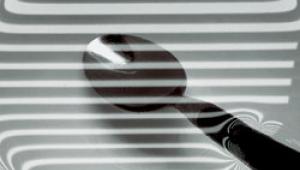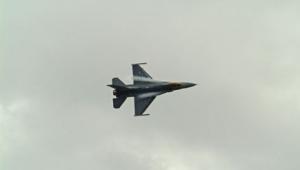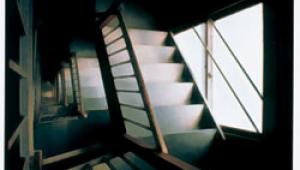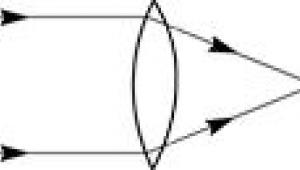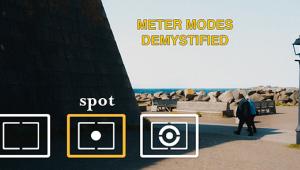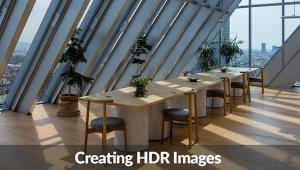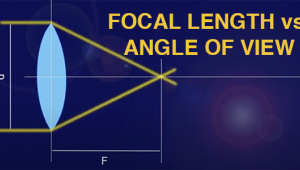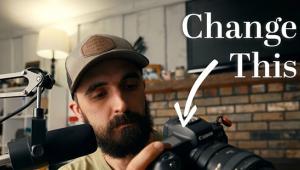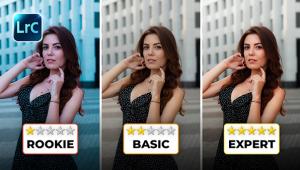The lenses that we use will define the kind of pictures that we are going to accomplish. - BentleyForbes
Choosing and Using Lenses Page 4
|
Zoom Lenses
Today, the most popular lens type is the zoom, which incorporates a whole range of focal lengths in a single lens. Operating the zoom ring alters the relationships among the elements in the lens, thus altering the focal length. Popular zoom lenses include the 28–80mm, 28–105mm, 70–210mm, 28–200mm and 28–300mm, with many other focal-length ranges available. At the focal-length extremes, Pentax offers a 17–28mm fisheye zoom, and Nikon once offered a 1200–1700mm supertele zoom. There are quite a few wide-angle zooms (17–35mm and 20–35mm being the most common), with Sigma's 15–30mm being the widest nonfisheye zoom for film cameras. Sigma offers a 12–24mm zoom for digital SLRs to provide superwide-angle capability with cameras that have smaller-than-full-frame sensors (it becomes an 18–36mm on a digital SLR with a 1.5X "telephoto factor"). If you're on a tight budget, one of the 28–200mm or 28–300mm zooms is a good choice. We use the 28–105mm/28–135mm and 100–400mm/200–400mm zooms a lot ourselves. Early zoom lenses weren't pinpoint sharp, but today's major-brand zooms by and large are excellent—even pros use zoom lenses nowadays. By nature, zooms are heavier than single-focal-length lenses, and slower (there are some f/2.8 zooms, but these cost considerably more, so most zooms have maximum apertures in the f/3.5–5.6 range). Many zoom lenses have variable maximum apertures: a 70–210mm f/4–5.6 has a maximum aperture of f/4 at the 70mm setting and a maximum aperture of f/5.6 at the 210mm setting. TTL metering automatically compensates for this, but when using a hand-held meter, you have to use the appropriate index mark (wide or tele) when setting the aperture. Not all "zoom" lenses are true zooms. True zooms maintain focus as the focal length is changed, while vari-focal lenses change focus each time the focal length is changed. With AF cameras, this is not a problem, but when focusing manually, be sure to focus at the focal length you're going to use for the shot (it's generally easier to focus at the longest focal length, then zoom to the desired setting for the shot, but this doesn't work with vari-focal "zooms" that change focus when they are zoomed). Generally, the zooms with variable maximum apertures are vari-focal types. Some zoom lenses have separate zooming and focusing rings, while others feature a "one-touch" design, where a single ring handles both functions: rotating the ring focuses the lens, while pushing and pulling the ring zooms it. Some people prefer the separate rings, while others prefer single-ring operation. Which you prefer is up to you, but try the lens before you buy, to see if you're comfortable with the positioning and operation of the ring(s). Besides providing a whole range of focal lengths in a single lens, zoom lenses enable you to produce special effects by zooming during a long exposure, thus creating an "explosion" effect in the image.
Special-Purpose Lenses
There are three basic macro-lens focal-length ranges: normal (50mm or 60mm), short telephoto (100mm to 105mm), and telephoto (180 or 200mm) focal lengths. Longer macro lenses produce a given magnification from farther away than shorter ones—handy when dealing with subjects you can't (or don't want to) approach too closely. While many zoom lenses are touted as having "macro" capability, few really do—most will focus closely enough to provide 1/3- to 1/4-life-size images; and they're not specially corrected for close-up work, while true macro lenses focus down to life size (1:1), or at least half life size (1:2), and are optimized for such duty. There are some that focus closer than 1:3, plus a couple of true macro zooms: Minolta's AF 3X–1X f/1.7–2.8 and Canon's manual-focus MP-E 65mm f/2.8 1X–5X, for example, but these are highly specialized units that don't focus out to infinity. Fisheye lenses feature the shortest focal lengths of all (6–16mm), and have angles of view so wide (180° or greater) that they produce round images on the film frame instead of the usual rectangular ones. Fisheyes produce lots of barrel distortion—any straight lines not going through the center of the image will be curved (including the horizon line if you tilt the camera up or down). There are two types of fisheyes: circular, and full-frame. Circular fisheyes produce the typical 180° round fisheye image. Full-frame fisheye lenses "crop" a rectangle out of the circular fisheye image to fill the film frame, thus providing a 180° angle of view measured diagonally (from corner to corner). Nikon offers a special 10.5mm f/2.8 full-frame fisheye for its digital SLRs, which provides the field of view of a 16mm fisheye on a 35mm film SLR. There are also fisheye adapters, which attach to the front of normal and wide-angle lenses, and produce circular fisheye-effect images. Because the front elements of fisheye lenses are spherical rather than almost flat (and, in the case of circular fisheyes, rather large), it's difficult if not impossible to attach screw-mount filters. So, most fisheyes provide built-in filters (generally, a few colored ones and a neutral-density filter) or a filter slot near the rear of the lens that accepts smaller filters. Perspective-control (PC) lenses might not be Politically Correct, but they let you correct converging parallel lines in shots of buildings. When you tilt the camera up, the film plane is no longer parallel to the subject plane, so the building's vertical lines converge near the top of the photo. Perspective-control lenses (also called shift lenses) have front elements that can be shifted up or down or left or right, so instead of tilting the camera up to get a whole building in the photo, you can just shift the front element up to do it, while keeping the camera pointed straight ahead. Since the film plane remains parallel to the subject plane, there's no convergence. PC lenses are generally 24–35mm wide-angles, because longer lenses would still require tilting the camera up to get a whole building in the frame, even at maximum shift of the front lens element—although Nikon has introduced an 85mm PC shift lens. Canon offers three manual-focus tilt/shift lenses for its EOS AF SLR cameras, in 24mm, 45mm and 90mm focal lengths. Besides shifting up, down, left and right, these lenses can be tilted 8° to provide view-camera-style depth-of-field control via the Scheimpflug principle (i.e., depth of field is greatest when lines drawn through film, lens and subject planes meet at the same point). Soft-focus lenses, as their name implies, produce a soft, glowing image of the subject—a pleasant effect considerably different from the unpleasant effect of out-of-focus images made with a regular lens, or blurred images caused by camera or subject movement. The soft effect is greatest at maximum aperture, decreasing when the lens is stopped down. Most soft-focus lenses for 35mm cameras have control rings that allow you to adjust the degree of spherical aberration (and hence, softness) from great to none. You can simulate the effect of a soft-focus lens by making a double exposure with a regular lens: Make the first exposure in focus, then make a second exposure on the same frame with the lens focused too close or too far for the subject. It's best to mount the camera on a tripod for this, to keep the two images in register.
Flare, Distortion & Vignetting
Distortion comes in two basic forms: pincushion and barrel. In pincushion distortion, straight lines near the edges of the frame bow in toward the center of the frame. With barrel distortion, straight lines near the edges of the frame bow out away from the center. Such distortions are often evident in zooms lenses, with barrel distortion appearing at short focal lengths and pincushion distortion at long focal lengths. There's not much you can do about distortion if it is present (just compose so that no straight lines appear near the edges of the frame), so it's wise to check for it before buying any lens. Generally, zoom lenses built into less-expensive film and digital cameras, and lower-end zooms for SLRs, aren't as well corrected for distortion as higher-end products. Vignetting is the cutting off of the corners and edges of the image. This can be caused by a lens hood that is too long for the lens, or it can be inherent in the lens itself—it's especially evident in high-ratio zoom lenses, such as 28–200mm models. Stopping the lens down will generally eliminate inherent vignetting; switching to a shorter hood will eliminate lens-hood-caused vignetting. |
- Log in or register to post comments







